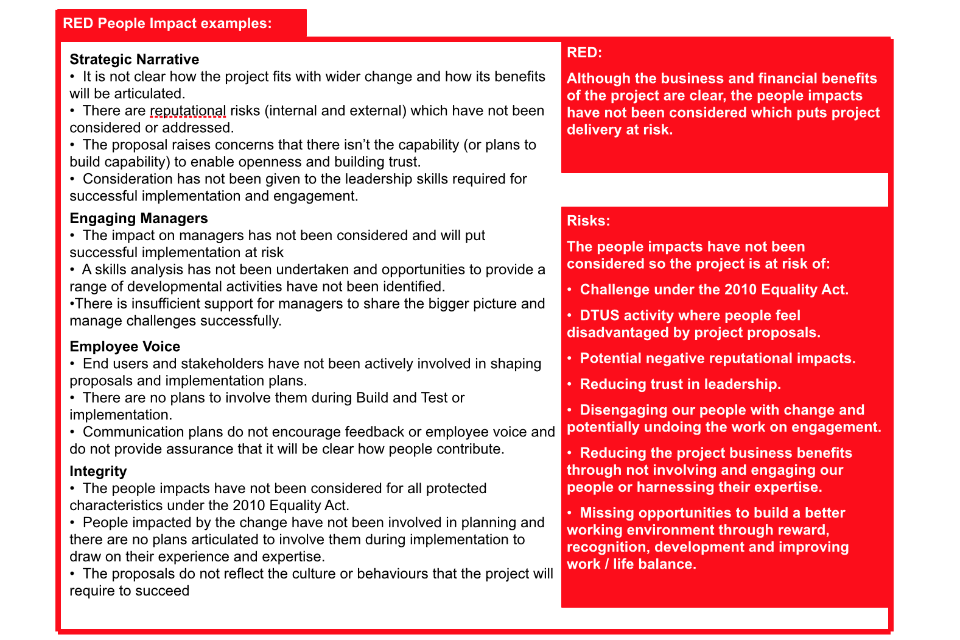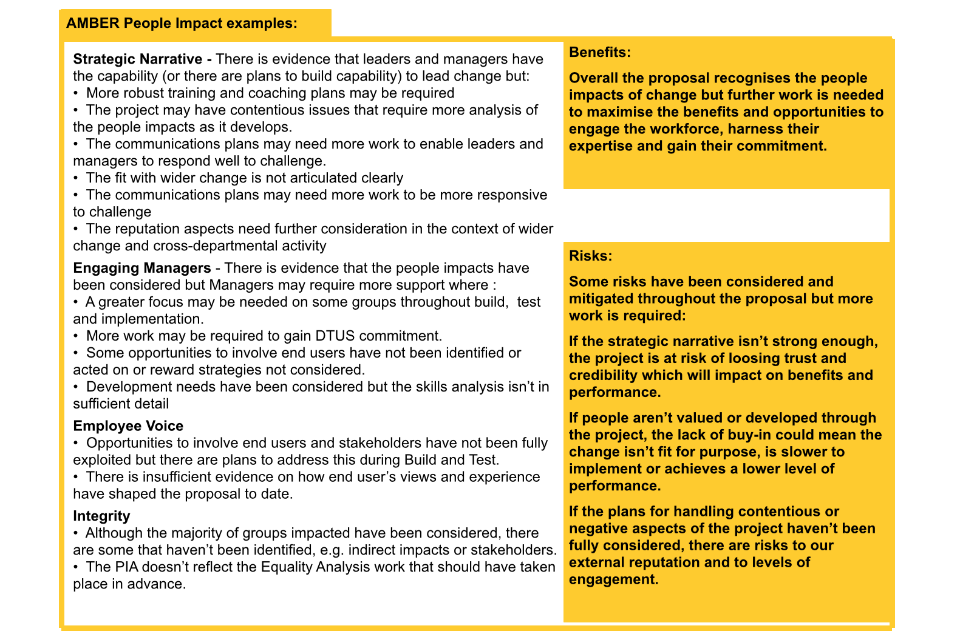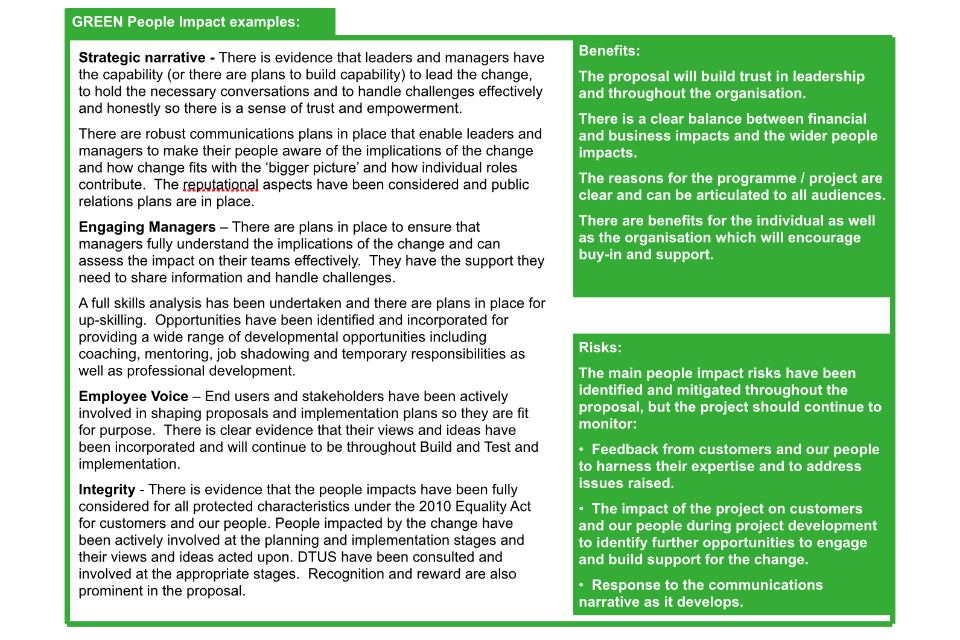People Impact Assessment in HM Revenue & Customs
Published 22 July 2014
People Impact Assessment
The People Impact Assessment (PIA) is a series of tools to help anyone involved in change to think through the implications for their people to make the process of change as comfortable as possible for them, minimising the impact on performance and motivation.
This tool helps projects assess the people impacts and their risks so they can identify mitigating actions and build these into project planning and delivery.
About the People Impact Assessment
Developed in response to the Civil Service People Survey feedback that change isn’t managed well in HM Revenue & Customs (HMRC), PIA is a set of tools that help people think through the people impacts of change - not the logistics of change, for example moving 16 people from Preston to Manchester, but the impact of change on their private and professional lives such as commuting difficulties or childcare arrangements. People are the Civil Service’s greatest resource and if the people impacts aren’t well managed, they will negatively affect performance and motivation. At a time when we have to do more with less, this is something that we cannot afford to happen.
Identifying the people impacts, risks and mitigating actions
A People Impact Assessment will identify the groups likely to be affected by the change; the impacts the change will have on individuals in each group; the risks those impacts pose to successfully delivery of the change; and the mitigating actions that will help to manage those risks and people impacts. The outputs from the PIA will inform project development and delivery plans as well as communication plans, planning resources, external communications etc.
The PIA & Governance / Change Framework
In HMRC, the PIA is an integral part of our governance. Our Change Framework guides the development of projects and programmes and ensures that the people impacts are considered at every stage of project development and delivery. The Change Framework includes the right to veto for certain stakeholders. In the case of the PIA, Human Resources (HR) representatives on each project have the right to veto if they consider that the people impacts haven’t been fully considered at any stage. The PIA Assurance for Decision-makers tool includes examples of green, amber and red people impact assessments to help decision-makers challenge and assure.
Completing a People Impact Assessment
Step 1: Preparation
- the PIA should be completed following completion of an Equality Assessment. Where the project impacts on people with protected characteristics, these audiences should be included in the PIA
- the PIA should be developed by a group with varied areas of expertise as different perspectives and knowledge will build a comprehensive PIA. To be fully effective, it is an opportunity to actively involve or consult stakeholders and / or end users as their experience and expertise will identify impacts that aren’t visible to the project team alone
Step 2: Completion
- the first step is to identify the audience groups – there are likely to be a range of groups, both internal and external that require different approaches to manage the change successfully. Feedback from the first projects to complete PIAs indicates that getting this section of the PIA right makes the rest of the process much easier. Consider the different stakeholder groups; groups who are indirectly impacted and be prepared to think widely
- the people impacts for each group – these are the impacts that the change may have on people in that group and these are driven by their personal circumstances. This part of the People Impact Assessment can be challenging and the People Impact Assessment guide will help you think the impacts through.
- the risks associated with the people impacts – these may be reputational, performance-related, motivational, customer service-orientated, financial etc. Risks identified in the PIA should also be included in a project’s risk register to ensure they are monitored
- the mitigating actions. These are the actions help to mitigate the risks and address the people impacts. As it isn’t possible to mitigate all risks or address all the people impacts, some of the mitigating actions are likely to involve having difficult conversations and giving the people impacted the opportunity to share their views and vent their frustrations.
Step 3: Ongoing action
- the actions identified under mitigating actions are outputs for the project and should be incorporated into project delivery plans, communications plans etc
- the PIA should be regularly reviewed as project plans develop as often the details of implementation can have major impacts
Assurance for decision-makers
Understanding the impact of change on individuals is critical to successful change management. This tool uses RAG (Red, Amber and Green) examples of a people impact assessment to support Decision-makers in challenging projects to ensure that the risks, people impacts and mitigating actions have been identified and included in delivery plans.
RAG examples:

People Impact Assessment: RAG rating - red examples

People Impact Assessment: RAG rating - amber examples

People Impact Assessment: RAG rating - green examples
